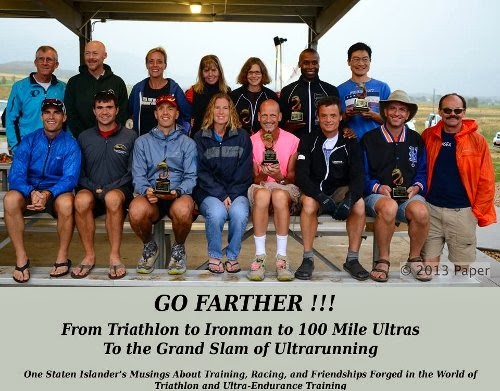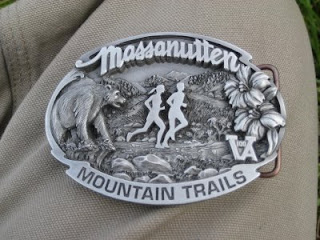In this week between Christmas and New Years, peoples' thoughts tend to shift to the coming year. The past 2 months have been very special since we extreme runners and triathletes now have a committee in a great club like the Staten Island Athletic Club. I owe it all to Mark Vogt, the President, and the SIAC Board to recognize the growth of alternative forms of running and to embrace it.

Off the top of my head there are two other clubs in this area that have a sizable alternative running population inside them. One is the Essex Running Club who have a nice group of people who do a heavy dose of trail running in the NJ area. The other group is the New York Flyers, who have a huge and passionate contingent of trail and ultra runners in its ranks. Both clubs' main bodies are still dedicated to road running (in NJ, the Essex Runners do the USATF-NJ Grand Prix and the NY Flyers do a lot of NYRR races in the big city) but both support and embrace the growing population of those who want to do trails races, ultras and triathlons without any conflicts.
So to those who are still a bit uneasy about having a new committee in the club, you can definitely relax. Both road runners and trail runners can comfortably live with each other under the same banner and these 2 clubs prove it. :-)
As for 2012, our first siXac committee meeting will take place on Wednesday January 4 at 8PM. I think we have a location for this meeting but I'll need to confirm it in the next couple of days. If interested, let me know via my email (ironpete@ironpete.com) and I'll keep you in the loop where it will be. Among the topics of this committee will be setting up a schedule of races to go to as well as picking out which endurance relay we all want to try to get a team for next year. Options for that are several races in the Ragnar Relay Series, the Green Mountain Relay, and the Reach the Beach Relay in New Hampshire. These are usually 12 person relays, so if you're interested, let me know also.
Even before the meeting we already have a schedule down for January, and some interest in forming a group for the North Face Endurance Challenge in May. The North Face includes a trail marathon, a 50k race, and a 50 mile race as well as a 4 x 10k trail relay for those who want to run shorter and run for a team. From what I hear, the Bear Mountain Lodge is now open (after being closed for renovations last year) and we can stay there overnight before tackling the races the next day. Again, if you're interested in any of these races let me know and I'll keep you in the loop.
One last thing there is an interest in is the two NJ Trail Series races in January. The Watchung Races are coming up quickly (Sat Jan 7) and you have a choice between a 10k, 10 mile, a trail marathon, or a 50k. It's a short trip across the bridge; if you are interested in carpooling to this event, feel free to contact me. The second race is the Winter Series on January 21. Distances are 5k, 10k, or half marathon. We already have a good number of people going; if you want to carpool, let me know.
That's about it for now. Happy Trails, and have a Happy 2012!





















